When Petersham Nurseries opened its doors 16 years ago it was a strange concept, going to the outskirts of London just for lunch. Yes, there were plants for sale in a magical setting but it was really the just-picked produce, grown near the glasshouse where it was cooked and served, that people were talking about. Similarly, when a young Arthur Potts Dawson opened his restaurant Acorn House in central London a couple of years later, and composted his leftovers on the roof, it was a bit… unusual. And yet both ventures were wildly popular.
Here’s another strange idea: a three-acre garden behind a busy high street in north London into which the owners want to invite you for a conversation about food. Omved Gardens in Highgate is almost a secret garden, though not for the local group who campaigned to stop developers acquiring the land, and it’s becoming known to a growing number of people interested in the holistic and nutritional properties of plants. For the owners, who are involved with the World Food Programme, it is an outdoor lab, a meeting place and a manifestation of their ideas around food production and waste. In other words, it’s a conceptual garden.
To this end, the appointment of landscape architects del Buono Gazerwitz makes perfect sense. The owners Karen and Lekhu Leason had already got to know Paul Gazerwitz when he designed their roof terrace, and they turned to him again when they acquired the undesignated green space known as Highgate Bowl. For centuries it had been used for market gardens and grazing pasture, and more recently was used as a garden centre and contractor’s yard that had contributed a great deal of hard paving and other non-green things. Read more about the garden below.
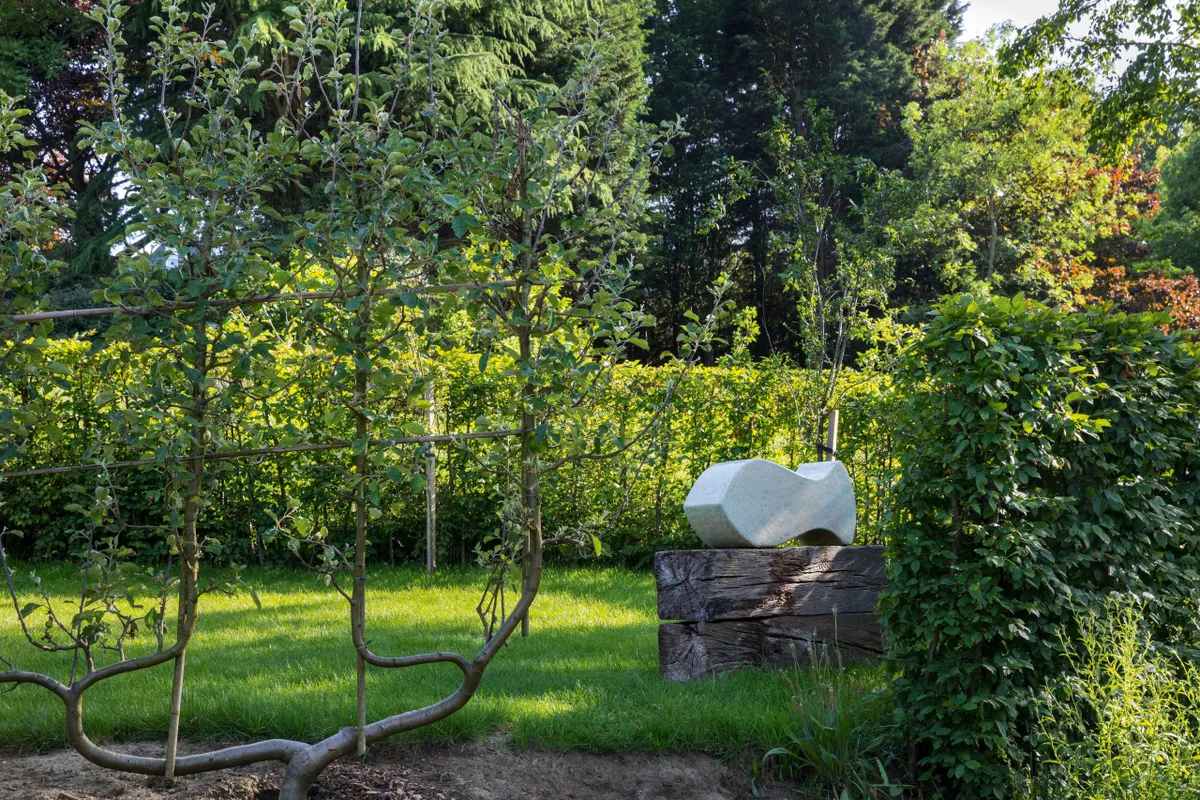
In the kitchen garden a Dutch dessert apple (Malus domestica ‘Notarisappel’) has been trained in an unusual U-shape. “I wanted to use some traditional elements of a kitchen garden, such as pleached and espaliered trees, in a more contemporary and informal way to express a continuity with
the past,” says designer Paul Gazerwitz.
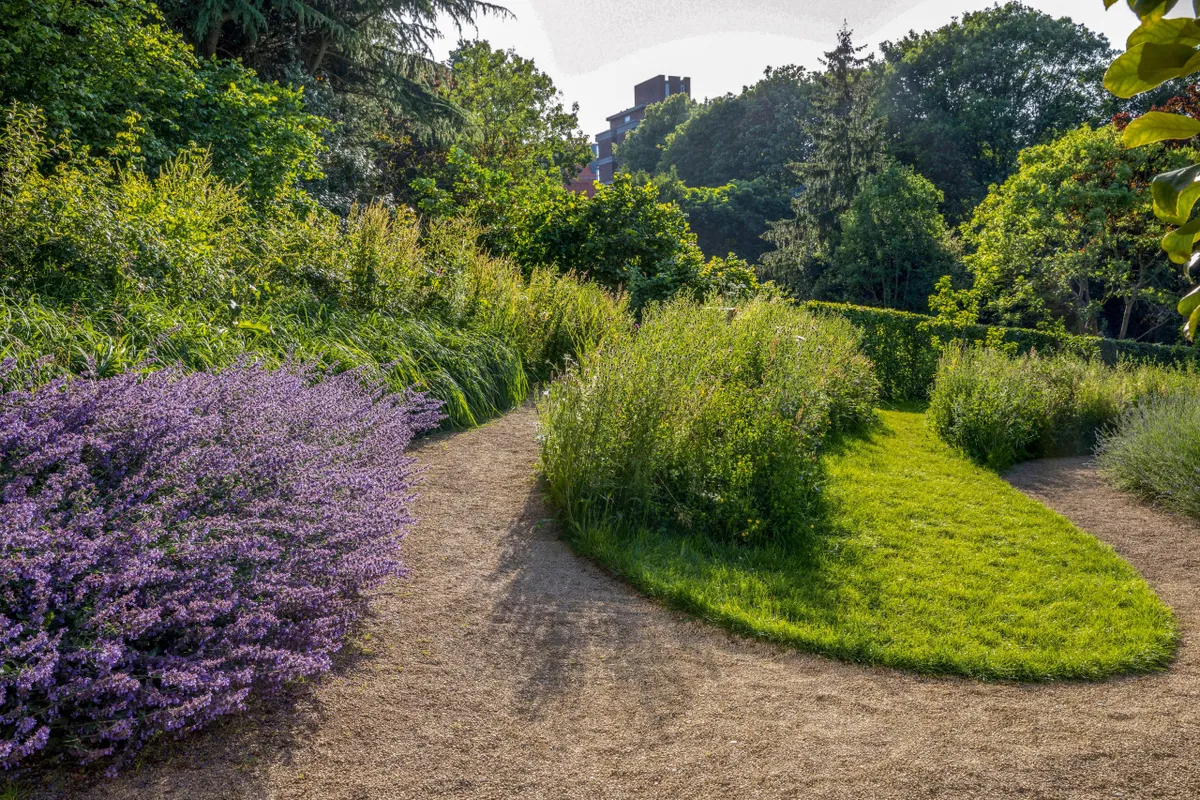
Wide paths spread out from the glasshouses; their curves contrasting with the utilitarian structures. Nepeta racemosa ‘Walkers Low’ attracts pollinating insects, while grass paths are mown through wildflowers so visitors can stray from the gravelled path.
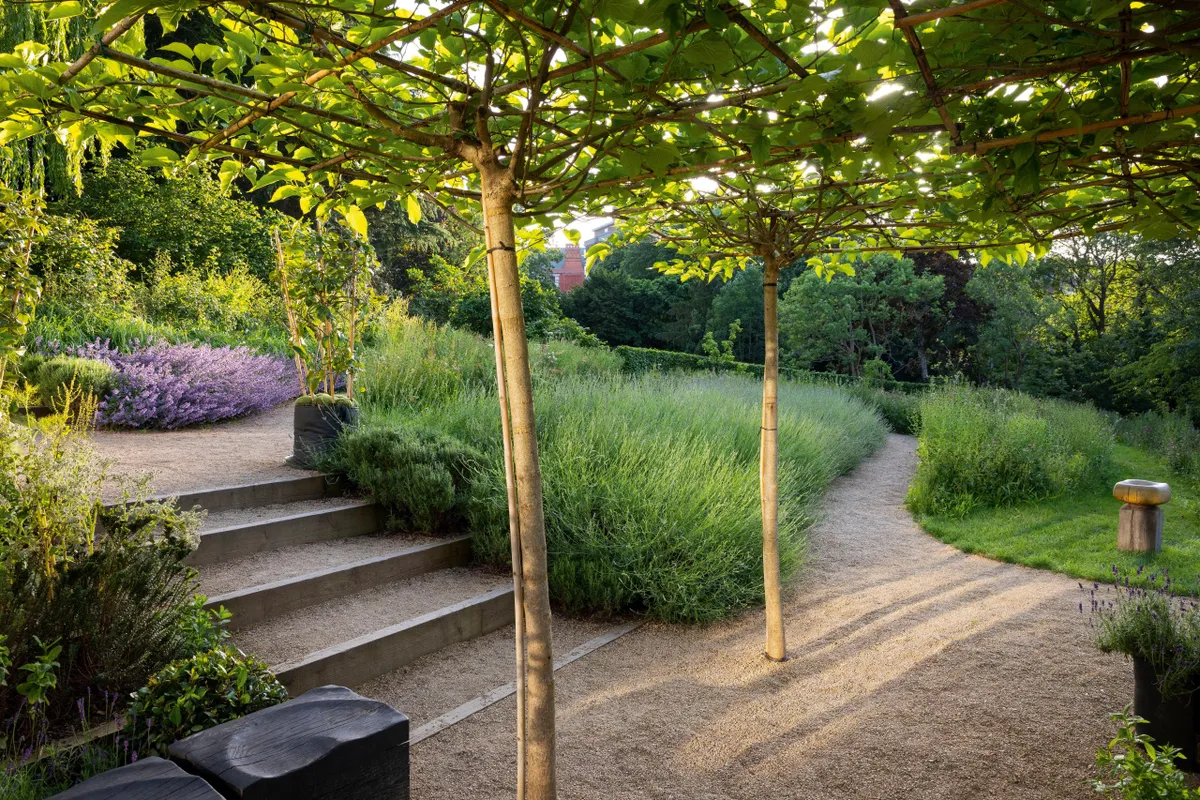
Extra gathering space by the glasshouses is sheltered with roof-trained white mulberries (Morus alba fruitless) – a type of green shelter that has become one of del Buono Gazerwitz’s signature design elements. The blackened oak seats are by Chris Nangle.
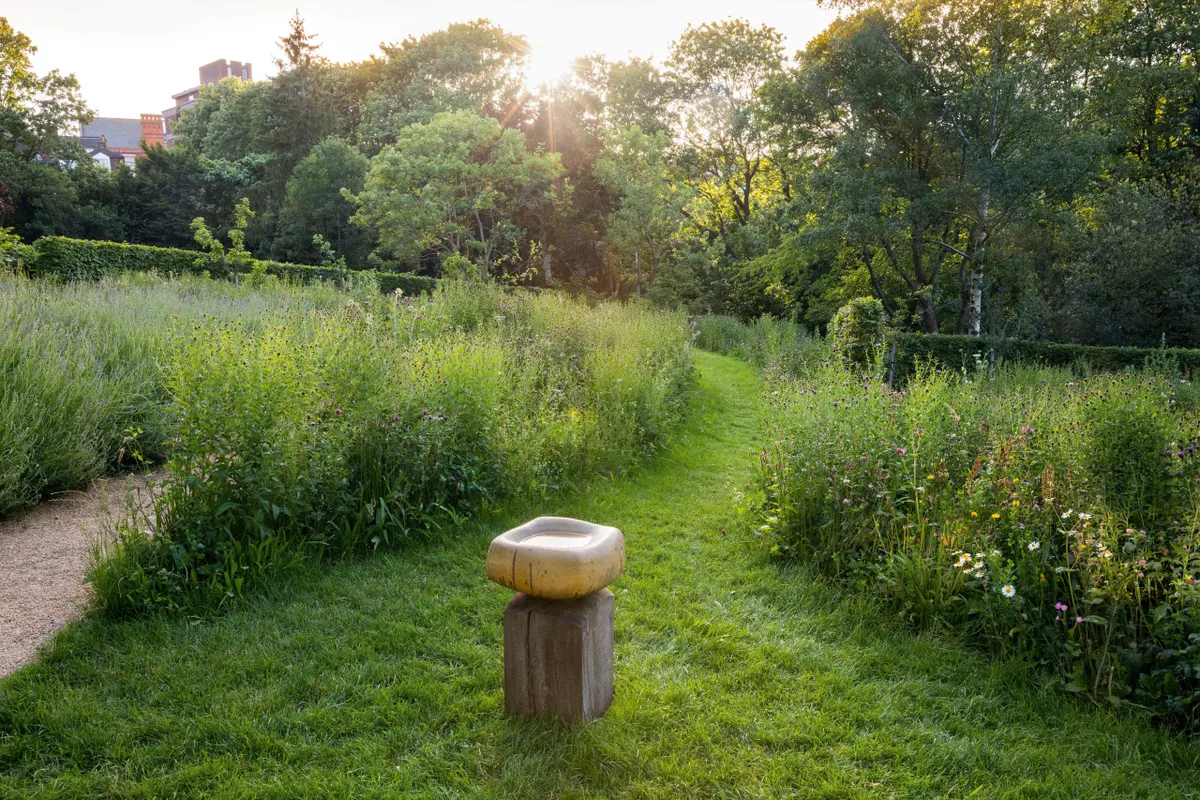
Several sculptures, all made by artist Sarah Walton, provide a motif around the garden. For her bird baths, Sarah makes forms that are full, “as though they have taken a breath.” They are salt-glazed ceramic, on plinths of weathered oak.
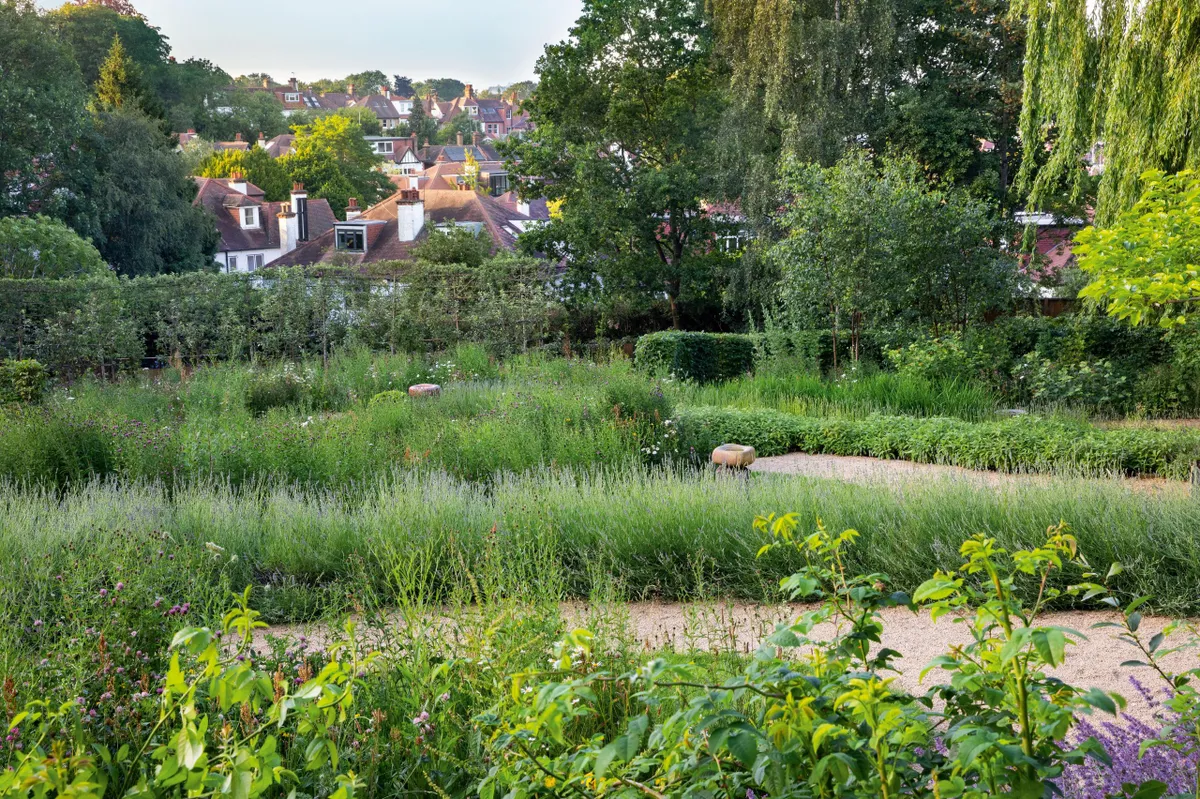
Planting is contained between paths that bend like rivers, inviting visitors to wander around the garden at a leisurely pace. Pleached apples (Malus domestica ‘Sterappel’) form a northern boundary to the kitchen garden, over which Highgate Village can be seen as a community of rooftops.
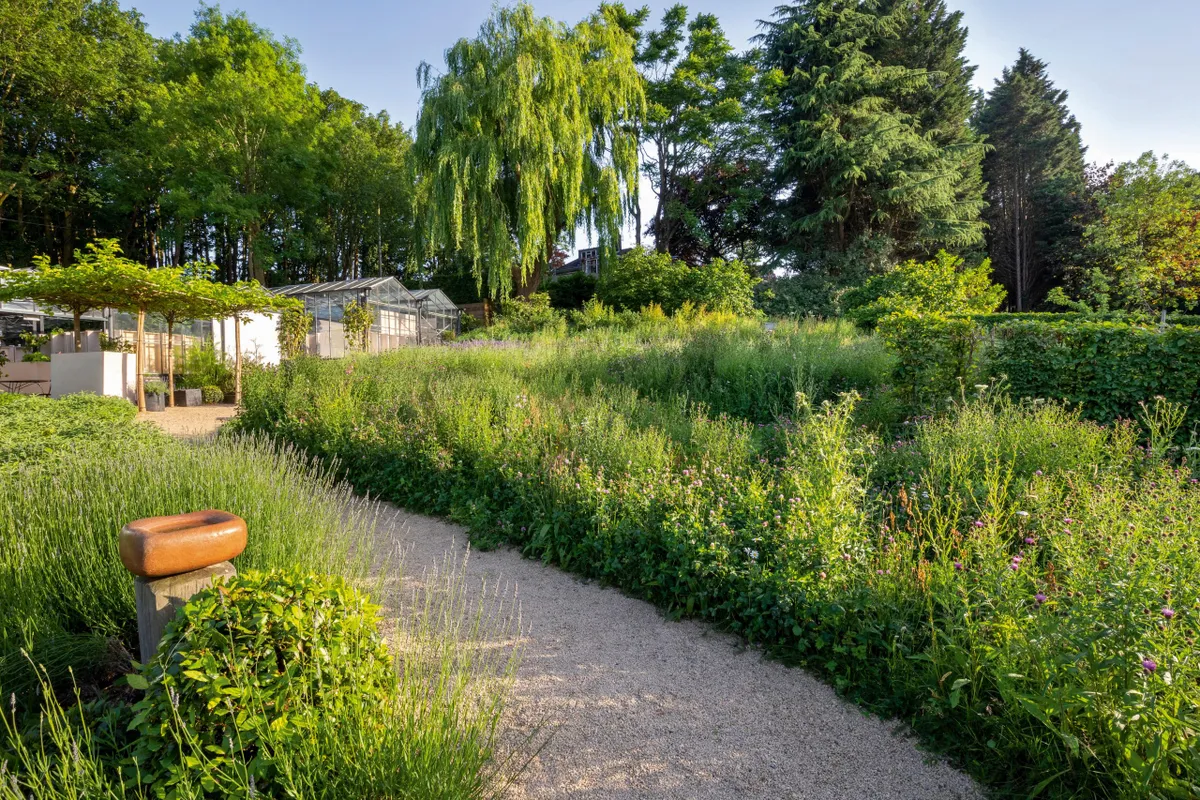
Glasshouses, which used to be the main staging area for the garden centre that previously occupied the site, have been turned into an events space. The initial planting palette focussed on wildflowers, to bring life and healing into the space, and these, in turn, are used for workshops based on herbal medicine.
Find out more about Omved Gardens at omvedgardens.com